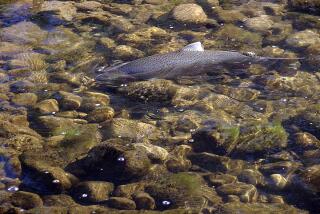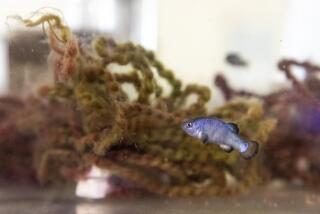Three-eyed fish and two-headed turtles? The stench of this river spanning U.S.-Mexico border is legendary

The river is so foul that rumors swirl about two-headed turtles and three-eyed fish. If you fall in, locals joke, you might sprout a third arm.
So go the stories about the New River, whose putrid green water runs like a primordial stew from Mexico’s sprawling city of Mexicali through California’s Imperial Valley.
The river, with skull-and-crossbone signs warning about the danger it poses, reminds Calexico resident Carlos Fernandez of a scene in “The Simpsons Movie” where Homer Simpson disposes of pig feces by dumping them into a lake.
“That’s the river,” the 34-year-old said. “I’m surprised there’s no glass biodome over us yet.”
For decades, government agencies have grappled over what to do about the New River. And while it is cleaner than it once was, it is still such a cesspool of pollution that Imperial Valley residents believe it will never be restored.
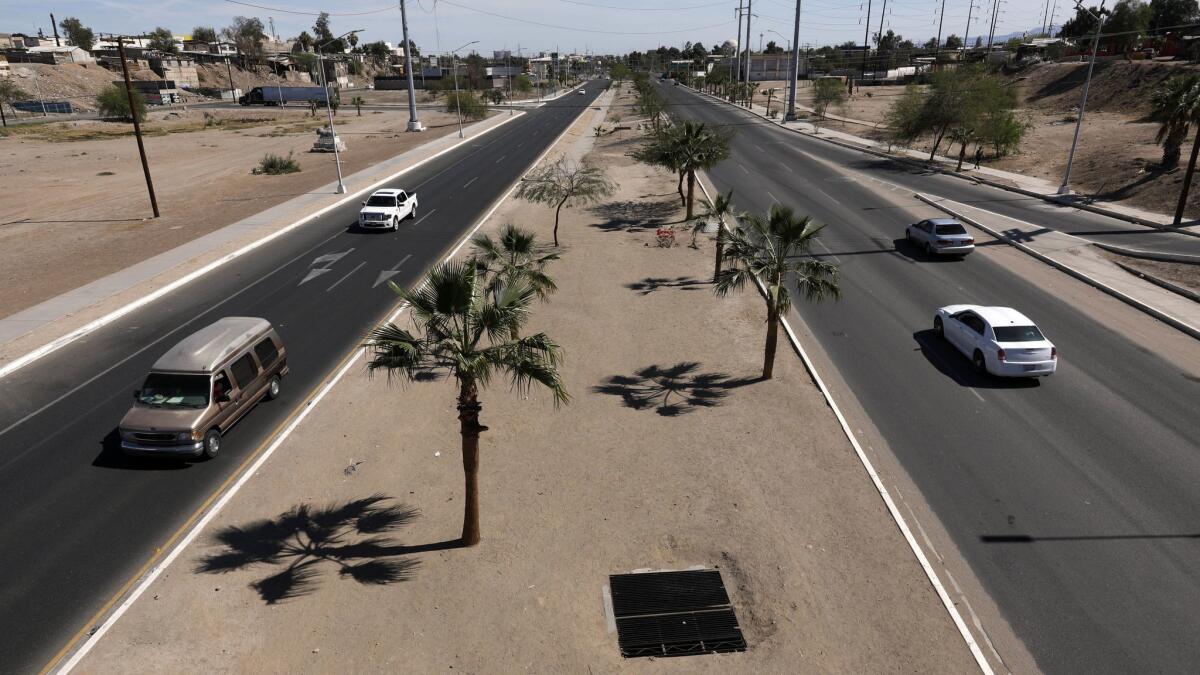
Last year, the California Environmental Protection Agency announced an agreement to move forward on a project that will improve water quality in the New River, once designated the most polluted in America.
“It’s a historic problem,” said Jose Angel, the executive officer with the California Regional Water Quality Control Board Region 7. “No one would like that running through their neighborhood, so why should it run through Calexico?”
There’s a 30-foot gap in the border fence separating Mexicali and its American neighbor, Calexico, allowing the river to flow through, and some crossing the border illegally know that the waist-high water is so disgusting that Border Patrol agents won’t get in to try to catch them. This year, workers are constructing a 30-foot-tall bollard-style barrier, which could eliminate the gap and cut off access to those trying to cross illegally.
David Kim, a Border Patrol assistant chief patrol agent for the El Centro sector, had to see a doctor after he fell into the river in 2001 while following a group of migrants.
The doctor asked him if the water had gotten in his eyes or mouth and then took a blood sample. A couple of weeks later Kim came back to get blood drawn again to make sure he was OK.
“We don’t tell agents they have to get in the water at all, because we know how dirty it is,” Kim said.
Fouled with trash and waste, the river flows for 16 miles through Mexicali and then for about 60 miles through the Imperial Valley before emptying into the Salton Sea.
Health guidelines state that fecal coliform bacteria levels in water designated for recreation, estimated using a process called the Most Probable Number (MPN) method, should not exceed a value of 400 MPN per 100 milliliters. In the New River, the fecal coliforms are in the range of 5,000 to 12,000 MPN per 100 milliliters — and that’s when the flow from Mexicali isn’t at its worst.
The situation has gotten significantly better in the last decade. But the New River has defied a complete makeover.
“Even though we managed to get rid of the raw sewage from Mexicali through implementation of national projects … the river doesn’t meet our standards,” Angel said. “It does pose a public health threat to anyone who comes in contact with that water.”
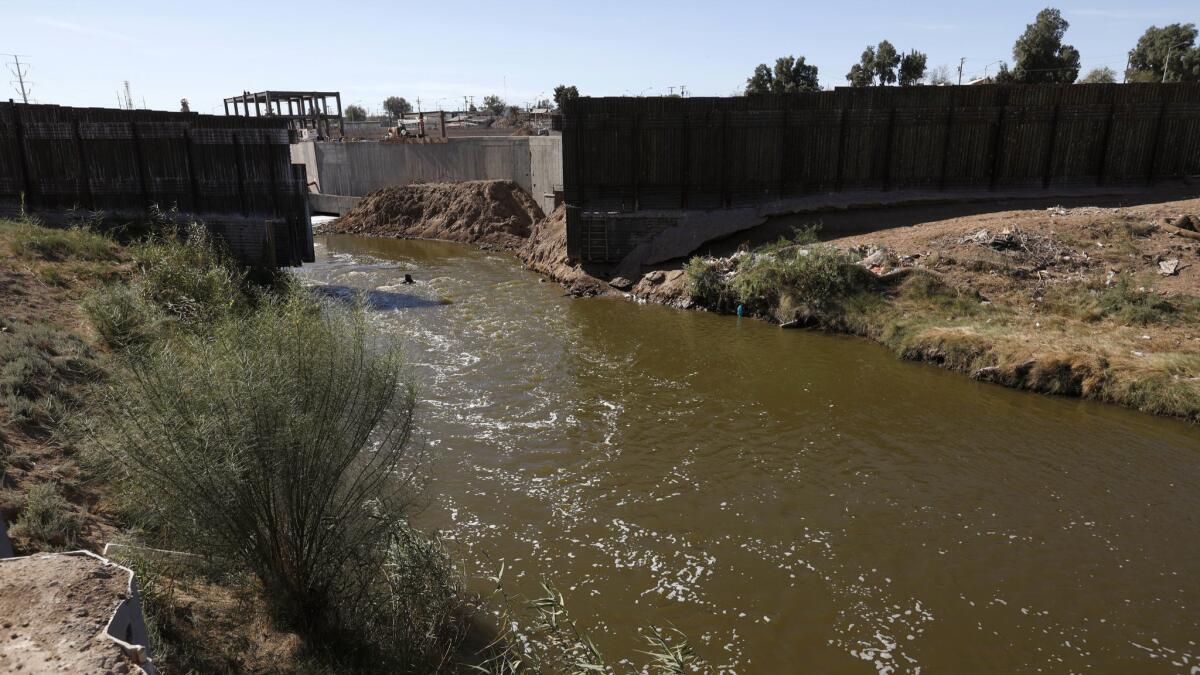
The New River was created in 1905 when the flooding Colorado River jumped its banks south of the border and flowed north until it filled what was then known as the Salton Sink and is now the Salton Sea. Because much of the Imperial Valley is below sea level, the New River flows north.
As Mexicali grew as a manufacturing and population center, so did the problems of the river, which has no substantial tributaries, making runoff and sewage outfall its only main sources of water.
About 15 years ago, parts of the river that flowed through Mexicali’s metropolitan area were enclosed. The only reminders of the river’s existence in the area close to the border is the street’s name, Bulevar Río Nuevo, and the above-ground grates from which the stink emanates on broiling days.
Enrique Vallejo has lived in a home along the river in Mexicali since he was 12. Now 51, he can still recall the green tinge to the water and the mosquitoes that swarmed over the waterway in years past. When it would rain, the river would overflow, sending filthy water streaming into his house.
To Vallejo, the river “was a dump.”
“We were so grateful when it was covered. It was a huge change,” he said.
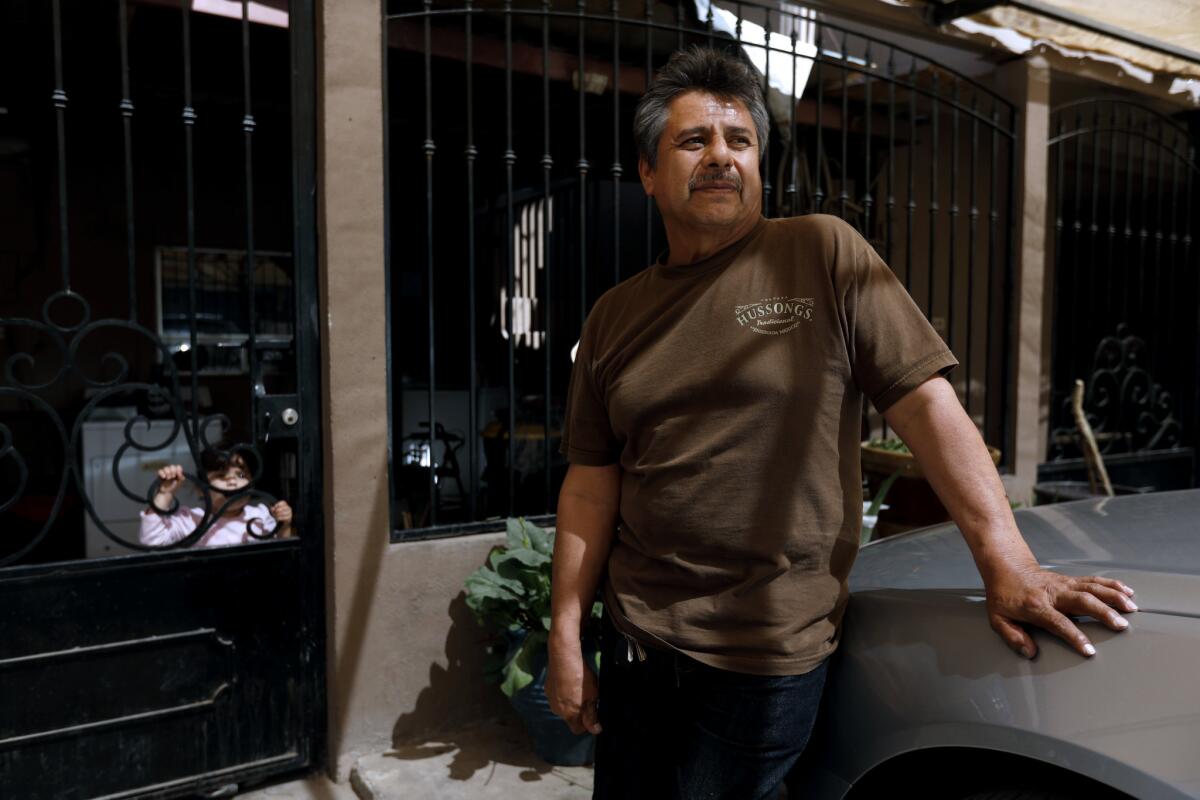
Across the border, officials are also hoping for a change, after Calexico, Imperial County and the Imperial Irrigation District signed a memorandum of understanding last October regarding maintenance and operation of a New River improvement project.
The project, which has been in the works since 2016, includes installment of a trash screen just downstream from the Mexico border, piping polluted water away from Calexico to wetlands and aeration structures for remediation, as well as replacing polluted water with treated wastewater from the city’s treatment plant.
Two years ago, the state Legislature appropriated $1.4 million to fund the planning, design and environmental review of the project. With the memorandum of understanding in place, the planning and design contract was put out for bid at the end of 2017 and awarded in March. Design and planning is expected to be completed in October.
“This agreement marks an important milestone in our efforts to improve the health of the New River,” California Secretary for Environmental Protection Matthew Rodriquez said last year.
We were so grateful when it was covered. It was a huge change.
— Enrique Vallejo, Mexicali resident who lives along the New River
Martha Fernandez has lived in her home on Calexico Street for 16 years, but first heard about the river when she moved to Calexico in 1980. For a while, she would walk along its banks.
Then, eight years ago, a yellow sign went up across from her house with a warning in Spanish and English between two skull-and-crossbone symbols:
“Contaminated soil and New River water
Keep Out!!”
After the sign appeared, her walks stopped.
Along Calexico’s streets near the river, some residents expressed doubt that there would be follow-through on cleaning up the river.
From the backyard of his house on Emilia Drive, Joe Valencia has a view of the New River. Valencia, who has lived in the Imperial Valley for 40 years, knows by now that you don’t fish in it.
“I haven’t seen anything change in the years I’m growing up,” the 47-year-old said. “I have my kids coming up and I don’t think they’ll even see any change either.”

On a recent morning, a Border Patrol agent sat in his green-and-white car, eyes trained on the gap in the fence above the New River. In Mexicali, workers were focused on constructing the new port of entry, while the agent was focused on catching migrants attempting to cross illegally.
Foamy water flowed from the Mexico side and out along the river’s banks, which are littered with water bottles, clothing, shoes and butane lighters.
Fish jumped out from the brown water and pigeons and sparrows circled above it, occasionally dropping down to take a drink from the water, where old tires had settled at the bottom. A light breeze made the smell slightly more bearable.
“I’ve heard of DNA mutations happening to the animals, three-eyed fish and I don’t know what else,” a trainee at a recent Border Patrol citizen’s academy said as he looked into the water, prompting peals of laughter from agents.
“I wouldn’t be shocked,” Agent Juan Gonzalez responded. “If someone told me they found a three-eyed catfish in there I’d be like, yeah.”
“Or a bird that could play guitar,” Agent Joel Merino added. “Probably.”
The day Agent David Kim fell into the water, he had stepped down onto what he thought was a solid embankment. It turned out to be a crust over the water. He sank down to his knees in water that had the consistency of oil.
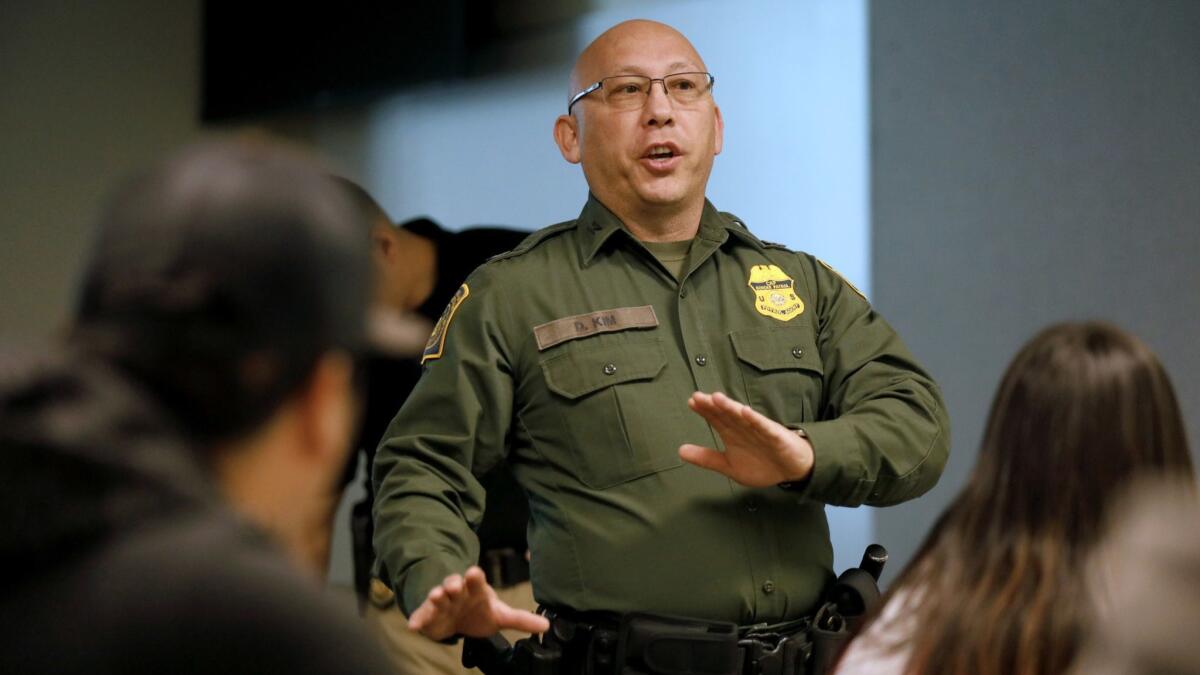
“The smell that came up, it smelled like an outhouse,” Kim recalled. “Immediately, just that smell started making my stomach turn. I was stuck in my boots, I couldn’t move, because it was just so thick around my legs.”
Kim lay on his stomach and crawled out. A couple of weeks after he gave his second blood sample, the doctor called to tell him his blood was all clear and that he had not contracted any infectious diseases.
“It has improved a lot,” Kim said of the river water. “But when people say it’s not as bad as it used to be, it’s still really bad.”
Agents often spot migrants in the river and warn them that they are in polluted water. In life or death situations — such as when a migrant is drowning — agents have entered the water for rescues.
Kim said he thinks most migrants don’t know how dangerous the polluted water is. But he thinks smugglers do — and try to use it to their advantage.
“They know that as long as you stay in this water you’re pretty safe — relatively speaking. You’re safe from us, from being arrested,” Kim said. “But as far as being safe health-wise … there’s no way to know how many people have contracted something from the water that have been in there.”
For more California news, follow @brittny_mejia
More to Read
Start your day right
Sign up for Essential California for news, features and recommendations from the L.A. Times and beyond in your inbox six days a week.
You may occasionally receive promotional content from the Los Angeles Times.

